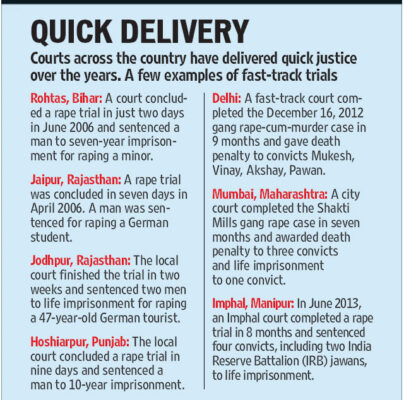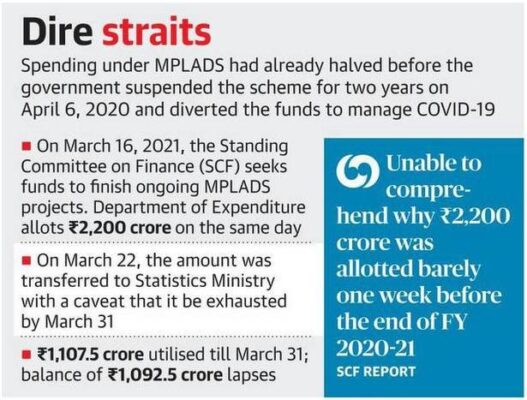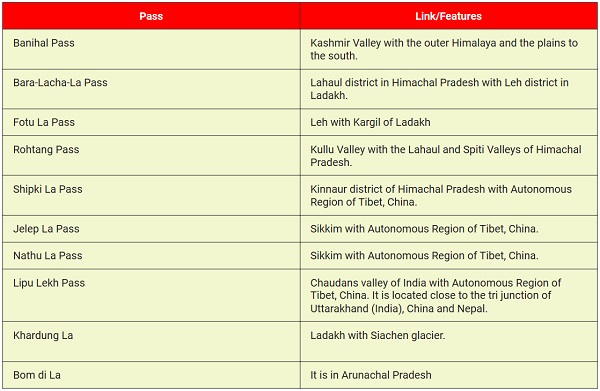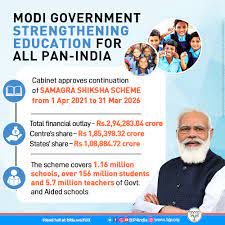- Home
- Prelims
- Mains
- Current Affairs
- Study Materials
- Test Series
 EDITORIALS & ARTICLES
EDITORIALS & ARTICLES
05th Aug 2021
INDIA’S FIRST INDIGENOUS AIRCRAFT CARRIER BEGINS SEA TRIALS
Recently, the Prime Minister has congratulated Indian Navy and Cochin Shipyard limited for maiden sea sortie by the Indigenous Aircraft Carrier (IAC-1) 'Vikrant'.
Indigenous Aircraft Carrier (IAC) 1




 Umlingla Pass
Umlingla Pass




- It is the first aircraft carrier designed and built in India.
- An aircraft carrier is one of the most potent marine assets for a nation, which enhances a Navy’s capability to travel far from its home shores to carry out air domination operations.
- It is usually escorted in the group by destroyers, missile cruisers, frigates, submarines, and supply ships.
- It has been designed by the Indian Navy’s Directorate of Naval Design (DND), and is being built at Cochin Shipyard Limited (CSL).
- Over 76 per cent of the material and equipment on board IAC-1 is indigenous.
- It includes 23,000 tonnes of steel, 2,500 km of electric cables, 150 km of pipes, and 2,000 valves, and a wide range of finished productsincluding rigid hull boats, galley equipment, air-conditioning and refrigeration plants, and steering gear.
- The experts consider that having an aircraft carrier as essential to be considered a ‘blue water’ navy i.e. one that has the capacity to project a nation’s strength and power across the high seas.
- An aircraft carrier generally leads as the capital ship of a carrier strike/battle group.
- India has joined the elite club where only five or six nations currently have the capability of manufacturing an aircraft carrier.
- The Navy calculates that about 80-85 per cent of the project cost of approximately Rs 23,000 crore has been ploughed back into the Indian economy.
- It will offer an incomparable military instrument with its ability to project Air Power over long distances, including Air Interdiction, Anti-Surface Warfare, offensive and defensive Counter-Air, Airborne Anti-Submarine Warfare and Airborne Early Warning.
- INS Vikrant, a Majestic-class 19,500-tonne warship, was the name of India’s much-loved first aircraft carrier.
- It was a source of immense national pride over several decades of service before it was decommissioned in 1997.
- India acquired the Vikrant from the United Kingdom in 1961, and the carrier played a stellar role in the 1971 war with Pakistan that led to the birth of Bangladesh.
- It was deployed in the Bay of Bengal, and its two air squadrons of Sea Hawk fighter jets and Alize surveillance aircraft were used in strikes on ports, merchant ships, and other targets.
- The new warship is comparable to India’s existing carrier INS Vikramaditya, which is a 44,500-tonne vessel and can carry up to 34 aircraft, including both fighter jets and helicopters.
- The IAC-1 will be the most potent sea-based asset, which will operate the Russian-made MiG-29K fighter aircraft and Kamov-31 Air Early Warning Helicopters.
- It will operate the soon-to-be-inducted MH-60R Seahawk multirole helicopter manufactured by the American aerospace and defence company Lockheed Martin.
- It will also operate the Advanced Light Helicopter (ALH) built by Bengaluru-based Hindustan Aeronautics Ltd.
- It is a pan India map showing all the Customs seaports, airports, land customs stations etc.
- It also contains addresses of the regulatory agencies and their websites.
- It is a tool developed by CBIC to empower our business as well as any interested person with up-to-date information on the legal and procedural requirements of Customs and Partner Government Agencies.
- It is aimed at providing free access to information on all Customs procedures and regulatory compliance for nearly 12,000 Customs Tariff Items.
- It would provide complete knowledge of all import and export related requirements for all items covered under the Customs Tariff thereby improving the ease of doing cross border trade.
- For using CIP, one can simply enter either the Customs Tariff Heading (CTH) or the description of the goods in question to get information to step-by-step procedures, regulatory compliances requirements like License, Certificates, etc., for imports as well as exports.
- The information about import-export through post and courier, re-import and re-export, project imports, import of samples and self-sealing facility available for exporters are also hosted on this portal.
- It also hosts the list of customs stations, land customs stations, seaports and airports across India by allowing users to choose from the map.
- The portal validates import-export code, authorised dealer code and goods and services tax identification number.
- It has a tool built into it that allows users to obtain necessary information about the import or export of a particular tariff item free of cost.
- It increases awareness among Indian businesses to self-understand the procedures and their duty liabilities without being dependant on experts for the same.
- Once the user login to Compliance Information Portal the information can be obtained by entering either of the following
- Customs Tariff Heading
- Description of Commodity
- This new portal covers three stages of Import and Export
- Prepare for Import and Export
- Pre-Import and Pre-Export
- Import and Export
- Provides stage-wise detailed process flow chart for all procedures of export for exporting any commodity covered under the Customs Tariff Act, 1975.
- The process flow chart covers all basic steps required from preparing for import to Out of Charge from Customs at Import stage.
- The process flow chart covers all basic steps required from preparing for export to Export General Manifest when the goods are exported.
- The Process flow chart also provides information about the requirement of necessary permissions/clearances or requirement of Licenses/Permits/Certificates/Other Authorizations (LPCOs) to be obtained from any Partner Government Agency (PGA) for imports as well as exports.
- The portal provides web-links of all Partner Government Agencies whose intervention is required for importing or exporting a commodity at any stage.
- The portal strives to provide every important detail of each step of the process flow chart to enable the trader to get all necessary information without physically interacting with the Partner Government Agencies. Such as:
- Step description
- Requirement description
- Laws/Regulations Governing the step
- Supporting documents required for the step
- Location and Telephone Numbers where the step is carried out
- It was established in pursuance of an appeal by the then Prime Minister, Pt. Jawaharlal Nehru in January, 1948 with public contributions to assist displaced persons from Pakistan.
- The fund consists entirely of public contributions and does not get any budgetary support.
- The corpus of the fund is invested in various forms with scheduled commercial banks and other agencies.
- The disbursements are made with the approval of the Prime Minister.
- It has not been constituted by the Parliament.
- The fund is recognized as a Trust under the Income Tax Act and the same is managed by Prime Minister or multiple delegates for national causes.
- The Prime Minister is the Chairman of PMNRF and is assisted by Officers/ Staff on honorary basis.
- It accepts only voluntary donations by individuals and institutions.
- The contributions flowing out of budgetary sources of Government or from the balance sheets of the public sector undertakings are not accepted.
- The conditional contributions, where the donor specifically mentions that the amount is meant for a particular purpose, are not accepted in the Fund.
- It is exempted under Income Tax Act, 1961 under Section 10 and 139 for return purposes.
- The contributions towards PMNRF are notified for 100% deduction from taxable income under section 80(G) of the Income Tax Act, 1961.
- Its resources are now utilized primarily to render immediate relief to:
- The families of those killed in natural calamities like floods, cyclones and earthquakes, etc. and
- The victims of the major accidents and riots
- The assistance from PMNRF is also rendered, to partially defray the expenses for medical treatment like heart surgeries, kidney transplantation, cancer treatment and acid attack etc.
- The scheme will be continued with an outlay of Rs. 1572.86 crore (Rs.971.70 crore as Central Share and Rs.601.16 crore as State share) has been kept for the FTSCs.
- Central Share is to be funded from Nirbhaya Fund.
- The Scheme was launched on September 2019.

- Fast-track courts are courts that have been set up to operate at a pace quicker than the rest of the judicial system.
- It usually resolves crimes of a grave nature or long-standing issues.
- They are officially known as Fast-Track Special Courts (FTSCs) or simply Fast Track Courts (FTCs) in the Indian context.
- The FTCs are established to bring more stringent provisions and expeditious trial and disposal of sexual offence cases.
- The central government enacted the Criminal Law (Amendment) Act, 2018 and made provision of stringent punishment, including death penalty for perpetrators of rape.
- They have a better clearance rate as compared to the regular courts and hold speedy trials.
- Besides providing quick justice to hapless victims, they strengthen the deterrence framework for sexual offenders.
- The primary responsibility and power for establishing FTSCs lie with the state governments.
- It currently covers 28 states.
- The expected outcomes of the FTCs are as follows:
- Further the commitment of the Nation to champion the cause of safety and security of women and girl child.
- Reduce the number of pending cases of Rape & POCSO Act.
- Provide speedy access to justice to the victims of sexual crimes and act as a deterrent for sexual offenders.
- Fastracking of these cases will declog the judicial system of the burden of case pendency
- Fast-track courts were first proposed by the 11th Finance Commission.
- De-clog the judicial system: The fast-track courts, at least in theory, can assist in declogging the Indian judicial system.
- Deliver justice for undertrials:Undertrials—people who are arrested or detained and awaiting their trial to begin—in India can often spend years before they get their day in court. The fast-track courts help resolve that dilemma.
- Deliver justice for victims:The fast-track special courts help in delivering justice and bringing closure to victims and victims’ families.
- Logistical issues:These logistical issues often delay the FTCs, especially in rural areas, and these courts end up taking a longer time than necessary to dispose of cases.
- Gaps in technology that prevented the courts from hearing from victims.
- Shortages of staff and judges.
- Samples from forensic labs are also reportedly delayed.
- Problems of prioritization: Another flaw with FTCs is deciding which cases to prioritize—and consequently, assign for fast-tracking. This requires difficult decisions and, oftentimes, the answers are based on political machinations and emotions.
- Quick (in) justice: With the overwhelming time pressure and media focus on high-profile fast-tracked cases, judges could feel the pressure to ignore certain contentious points in a bid to hasten the process.
- The lapse occurred as the Finance Ministry granted “barely a week” to the Ministry of Statistics and Programme Implementation (MoSPI) to release the funds.
- The scheme had been suspended for two years to divert the funds for managing the COVID-19 pandemic.

- The MPLADS scheme was formulated in 1993.
- Under the scheme, each MP has the choice to suggest to the District Collector for works to the tune of Rs.5 Crores per annum to be taken up in his/her constituency.
- The Rajya Sabha Members of Parliament can recommend works in one or more districts in the State from where he/she has been elected.
- The Nominated Members of the Lok Sabha and Rajya Sabha may select any one or more Districts from any one State in the Country for implementation of their choice of work under the scheme.
- Ministry of Statistics and Programme Implementation (MOSPI) is the nodal ministry for the implementation of the scheme.
- MPs can also recommend work of up to Rs. 25 lakhs per year outside their constituency or state of election to promote national unity, harmony and fraternity.

- Funds are non-lapsable in nature.
- MPs need to recommend work worth at least 15% and 7.5% of their funds to create assets in areas inhabited by Scheduled Castes (SCs) and Scheduled Tribes (STs) respectively.
- It would hit several local area development projects under implementation across the country, especially in the five States that went to polls this year as no funds were released for these States and constituencies citing the Model Code of Conduct.
- The BRO has constructed and black-topped the highest motorable road in the world at 19,300 ft at Umlingla Pass in Eastern Ladakh.
- It has constructed a 52-km long tarmac road through Umlingla Pass, bettering the previous record of a road in Bolivia connecting to its volcano Uturuncu at 18,953 ft.
- The road now connects the important towns in Chumar sector of Eastern Ladakh.
- It will prove to be a boon to the local population as it offers an alternate direct route connecting Chisumle and Demchok from Leh.
- It will enhance the socio-economic condition and promote tourism in Ladakh.
- It has been constructed at an altitude higher than the Mt Everest Base Camps as the South Base Camp in Nepal is at an altitude of 17,598 ft, while North Base Camp in Tibet is at 16,900 ft.
- It has been constructed much above the altitude of Siachen Glacier which is at 17,700 ft.
- The Khardung La Pass in Leh is at an altitude of 17,582 ft.
- It has been achieved by the BRO as part of “Project Himank”.
 Umlingla Pass
Umlingla Pass
- It is located at an altitude of 19,300ft in the union territory of Ladakh.
- It is stretching to a distance of almost 86km which connects Chisumle and Demchok villages.
- It is a project of the Border Roads Organisation (BRO) in the Ladakh region of northernmost India that started in August 1985.
- Under Project Himank, the BRO is responsible for the construction and maintenance of roads and related infrastructure in Ladakh along the Line of Actual Control (LAC).
- It ensures access to sensitive military areas including the world's highest battleground at the Siachen Glacier and Pangong Tso Lake.
- It constructed the world's highest Bailey bridge at Khardung La, though this has been subsequently replaced by a causeway.
- The Union Budget of 2018-19 has announced that school education would be treated holistically and without segmentation from pre-primary to class XII.
- The Department of Education has launched the Integrated Scheme for School Education, Samagra Shiksha in 2018.
- It was launched by subsuming the erstwhile Centrally Sponsored Schemes of Sarva Shiksha Abhiyan (SSA), Rashtriya Madhyamik Shiksha Abhiyan (RMSA) and Teacher Education (TE).

- It is an integrated scheme for school education covering the entire gamut from pre-school to class XII.
- It is implemented as a Centrally Sponsored Scheme through a single State Implementation Society (SIS) at the State level.
- At the National level, there is a Governing Council/Body headed by the Minister of Education and a Project Approval Board (PAB) headed by Secretary, Department of School Education and Literacy.
- The Governing Council/body will be empowered to modify financial and programmatic norms and approve the detailed guidelines for implementation within the overall Framework of the scheme.
- It covers 1.16 million schools, over 156 million students and 5.7 million Teachers of Government and Aided schools (from pre-primary to senior secondary level) by involving all stakeholders of the school ecosystem.
- It aims to:
- Universalize access to school education;
- Promote equity through the inclusion of disadvantaged groups and weaker sections; and
- Improve the quality of education across all levels of school education.
- Implementing the recommendations of the National Education Policy 2020 (NEP 2020);
- Implementation of Right of Children to Free and Compulsory Education (RTE) Act, 2009;
- Early Childhood Care and Education;
- Emphasis on Foundational Literacy and Numeracy;
- Thrust on Holistic, Integrated, Inclusive and activity based Curriculum and Pedagogy to impart 21st century skills to the students;
- Provision of quality education and enhancing learning outcomes of students;
- Bridging Social and Gender Gaps in School Education;
- Ensuring equity and inclusion at all levels of school education;
- Strengthening and up-gradation of State Councils for Educational Research and Training (SCERTs)/State Institutes of Education and District Institutes for Education and Training (DIET) as nodal agency for teacher training;
- Ensuring safe, secure and conducive learning environment and maintenance of standards in schooling provisions and
- Promoting vocational education
- It treats school education as a continuum and is in accordance with Sustainable Development Goal for Education (SDG-4).
- It aims to ensure inclusive and equitable quality education and promote lifelong learning opportunities for all.
- It provides support for the implementation of the Right to Education (RTE) Act.
- It has been aligned with the recommendations of NEP 2020 to ensure that all children have access to quality education with an equitable and inclusive classroom environment.
- All child centric interventions will be provided directly to the students through DBT mode on an IT based platform over a period of time.
- It will have an effective convergence architecture with various Ministries/ developmental agencies of the Centre and State Governments.
- The expansion of vocational education will be done in convergence with the Ministry of Skill Development and Entrepreneurship and other Ministries providing funding for Skills.
- The existing infrastructure of schools and ITIs and Polytechnics will be used to ensure optimum utilization of the facilities, not only for school going children but also for out of school children.
- It has provided provision of training of Master Trainers for training of Anganwadi workers and In-service teacher training for ECCE teachers.
- It includes provision of upto Rs 500 per child for Teaching Learning Materials (TLM), indigenous toys and games, play based activities per annum for pre-primary sections in Government Schools.
- NIPUN Bharat aims to ensure that every child achieves the desired learning competencies in reading, writing and numeracy at the end of grade III and not later than grade V has been launched under the scheme.

- The Delhi Mumbai Industrial Corridor was the first corridor taken up for development in 2011.
- The other industrial corridors viz. Amritsar- Kolkata, Chennai-Bangalore, Vizag-Chennai, East Coast etc. were added to be part of the umbrella NICP.
- It is being implemented in close cooperation with the State Governments who provide land as their share of equity in the programme.
- The National Industrial Corridor Development and Implementation Trust (NICDIT) under the DPIIT is the overarching institutional framework to implement the programme.
- The mandate of the existing Delhi Mumbai Industrial Corridor Project and Implementation Trust Fund (DIMC-PITF) was expanded and the National Industrial Corridor Development and Implementation Trust (NICDIT) was established in December, 2016.
- 11 Industrial Corridors Projects are being taken up for development with 32 Projects to be developed in four phases up to 2024-25:
- Delhi Mumbai Industrial Corridor (DMIC);
- Chennai Bengaluru Industrial Corridor (CBIC);
- Amritsar Kolkata Industrial Corridor (AKIC);
- East Coast Industrial Corridor (ECIC) with Vizag Chennai Industrial Corridor (VCIC);
- Bengaluru Mumbai Industrial Corridor (BMIC);
- Extension of CBIC to Kochi via Coimbatore;
- Hyderabad Nagpur Industrial Corridor (HNIC);
- Hyderabad Warangal Industrial Corridor (HWIC);
- Hyderabad Bengaluru Industrial Corridor (HBIC);
- Odisha Economic Corridor (OEC);
- Delhi Nagpur Industrial Corridor (DNIC)
- Phase 1: Projects under implementation and nearing completion
- Dholera Special Investment Region (22.5 sq. kms) under DMIC in Gujarat;
- Shendra Bidkin Industrial Area (18.55 sq. kms) under DMIC in Maharashtra;
- Integrated Industrial Township Greater Noida in Uttar Pradesh (747.5 acres) under DMIC in Uttar Pradesh; and
- Integrated Industrial Township Vikram Udyogpuri near Ujjain (1100 acres) under DMIC in Madhya Pradesh
- Phase 2: Projects in advance stage of planning and implementation to be initiated by 2021
- Integrated Multi Modal Logistics Hub at Nangal Chaudhary (886 acres) in Haryana under DMIC has been approved by CCEA and implementation is likely to be initiated shortly;
- Krishnapatnam Industrial Area (2,500 acres) in Andhra Pradesh and Tumakuru Industrial Area (1,736 acres) in Karnataka under CBIC has been approved by NICDIT and approval from CCEA is being sought;
- For Multi Modal Logistics Hub (MMLH) & Multi Modal Transport Hub (MMTH) (1,208 acres) at Greater Noida in UP under DMIC, NICDIT has accorded its approval & CCEA approval is being sought;
- As part of DMIC, for Dighi Port Industrial Area (7413 acres), activities pertaining to detailed master planning and preliminary engineering has been completed; and
- As part of Hyderabad Warangal Industrial Corridor, master planning has been completed for Hyderabad (8000 acres)
- Phase 3: Projects under development and implementation likely to be initiated by 2023
- As part of CBIC and its extension to Kochi, activities pertaining to detailed master planning and preliminary engineering for Ponneri (4,000 acres) and Dharmapuri Salem (1733 acres) in Tamil Nadu and Palakkad (1,878 acres) in Kerala has been initiated
- Phase 4: Projects under conceptualization and implementation likely to be initiated by 2024
- For VCIC Corridor, project development activities are being initiate for Kopparthy and & Chittoor in Andhra Pradesh and tender documents for selection of consultants have been issued.
- For AKIC Corridor, Integrated Manufacturing Cluster at Prag Khurpia (2,935 acres) under AKIC in Uttarakhand is being taken up and tender documents for selection of consultants have been issued.
- As part of Hyderabad Nagpur Industrial Corridor, master planning has been completed for Zaheerabad (3500 acres)
- It has been conceived to promote world class manufacturing facilities and develop futuristic industrial cities in India.
- The broad objective of NICP is to provide plug and play infrastructural facilities for setting up large scale manufacturing units.
- The programme is meant to compete with the best manufacturing and investment destinations in the world by converging next generation technologies across different sectors.
- The industrial nodes and projects are being developed under the programme to facilitate manufacturing investments and increasing our participation in the global value chains.
- The facilities under the NICP are being offered as a showcase to potential global investors in the shifting of their large-scale manufacturing investments post Covid-19 pandemic.
- It is also expected to help in realizing the goal of Aatmanirbhar Bharat by encouraging large scale domestic manufacturing.

- It was launched in 2018 by the Ministry of Petroleum & Natural Gas in association with Indian Oil Corporation Ltd., Bharat Petroleum Corporation Ltd. and Hindustan Petroleum Corporation Ltd.
- It envisages targeting production of 15 MMT of CBG from 5000 plants by 2023.
- It aims to set up Compressed Bio-Gas production plants and make CBG available in the market for use as a green fuel.
- It will provide an investment of 1.75 lakh crore, an additional revenue source to farmers, and 75,000 direct job opportunities and lakhs of indirect jobs.
- It would benefit vehicle-users as well as farmers and entrepreneurs.
- It holds great promise for efficient municipal solid waste management and in tackling the problem of polluted urban air due to farm stubble-burning and carbon emissions.
- It will help bring down dependency on crude oil imports and in realising the Prime Minister’s vision of enhancing farmers’ income, rural employment and entrepreneurship.
- Bio-gas is produced naturally (through a process of anaerobic decomposition) from waste / bio-mass sources like agriculture residue, cattle dung, sugarcane press mud, municipal solid waste, sewage treatment plant waste, etc.
- After purification, it is compressed and called CBG, which has high methane content.
- It is exactly similar to the commercially available natural gas in its composition and energy potential.
- It can be used as an alternative, renewable automotive fuel with similar calorific value and other properties similar to CNG.
- Responsible waste management, reduction in carbon emissions and pollution;
- Additional revenue source for farmers;
- Boost to entrepreneurship, rural economy and employment;
- Support to national commitments in achieving climate change goals;
- Reduction in import of natural gas and crude oil; and
- Buffer against crude oil/gas price fluctuations









 Latest News
Latest News General Studies
General Studies